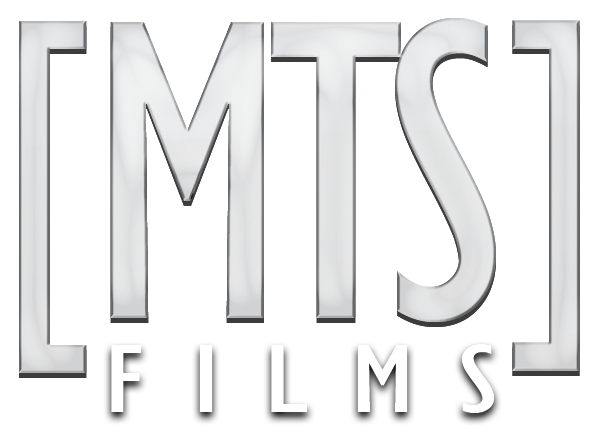Exceptional actress Courtnee Johnston above. Frame grab from TV pilot "Make Or Break", written and directed by Thomas Petrakos.
It's not always about using cheap gear and shitty rigs, but of late it has been a topic that I've talked about a lot (CineSummit for example). On the majority of work that I get (Indy, self funded, negative budget) I often have no option but to use the gear I already own...which when it comes to lighting, is cheap and nasty ;) My LED's are about 3 years old and don't have a brand name - I purchased them from eBay/China. They aren't the best in the world and since I've compared to them Kino Celeb's for example and they really are shite haha...mostly in terms of light output and and colour accuracy. That being said, if you KNOW the shiteness, then you can work with the strengths and avoid the weeknesses, or at least know what to expect. For example, in the shot below (and in THIS SHOT), I've used my shitty LED's to great effect. My 500 LED that has dial-able "tungsten", is super green, but as you can see it works wonderfully as a hair light.
As for my tungsten fresnels (please, please PLEASE don't embarrass yourself and pronounce Fresnel as "f-r-e-Z-n-e-l", the "S" is silent. Just say "f-r-e-n-e-l-l"), I've purchased the cheapest I could find, again from China (in this case from CAME TV, an eBay seller). For those of you who don't know the difference between a RED HEAD light and a Fresnel light, let me quickly explain.
"RED HEADs" and "BLONDEs" (often of 800W and 2000W - or 2K respectively) are both OPEN FACED lights, and both use tungsten (3200 Kelvin) bulbs. "Open Faced" meaning that the bulb is bare and does not have anything in front of it. The light spills out of the fixture which has a reflective background and resulting shadows are sharp. They are a great light source for filling a large area with uniform light. The downside to Open Faced Lights is that they are difficult to "shape". The only thing you have to shape your light are the barn doors, often used as cutters and useful for applying gels or diffusion with pegs.
"FRESNELS" on the other hand are not Open Faced. They have a "fresnel" lens in front of the bulb and fixture. The fresnel lens is a very efficient tool for focussing a beam of light - much more so than a traditional magnifying glass. Check out this link to learn more about its creator and the lens's characteristics. Not only does the lens magnify the light (focussing or concentrating more of it into a smaller area), it also creates a much softer shadow compared to that of a bare bulbed open face source. My fresnels are of 350w and 650w variety, but you can get other varieties too - 150w for example, or 1K and 2K variants).
So, getting back to budget and not having an arsenal of lighting equipment (or a gaffer's truck full of goodies), my lighting kit does NOT comprise of any open faced lights. Why? Because I find that I can pretty much do anything with a fresnel that I can with an open faced, plus I can SHAPE the light, control the beam and have more flexibility with a lower powered lamp, plus if I want hard light, the shadows are much nicer :) As you can see in the diagram below, I used a fresnel but bounced the light back into the actress's face so as to create a large soft source.
A lot of my lighting diagrams are created months after a shoot, so I'm basically trying to remember the setup as best I can. That's not to say they are not accurate, but sometimes my camera settings have been slightly off (in a few cases, with White Balance). Now days I actually go back and look at the Meta-Data so I don't screw up, but sometimes you'll be looking at my diagrams and the resulting shot and think "those colour temps don't really make sense". I promise I'm not lying or making any of this up!! The results you see in the final shot have been coloured by myself in Resolve or EDIUS - meaning that I may have tweaked certain aspects of the colour to suit the outcome you see here.
Make Or Break screens in a couple of weeks...I'm almost done with the grade! I needed a break from it hence this blog post :) The one thing I've noticed about shooting AND grading a single project is that you can't blame the camera-man for screwing up (which I did many times here hehe). So frustrating! But it's all on me. That being said, it has strengthened the importance of matching lenses for colour and contrast (I'm going to test all of mine and create profiles for them in resolve, but that's another blog post). I guess that's one advantage of cine lenses I've never REALLY experienced. My lens kit is a mixed bag, and it's hurting now hehe ;)
To learn more about how I light, be sure to visit the LIGHTING section above. There are 22 other's that I've shared and many more to come :) If you have any questions or comments, feel free to "DISQUS" them below! I've recent'y changed the commenting system on my blog to use DISQUS which is much, much better than the standard commenting system (I urge you to sign up to their service, it's free and is used on many forums and blogs). Thanks for visiting!
Matt




